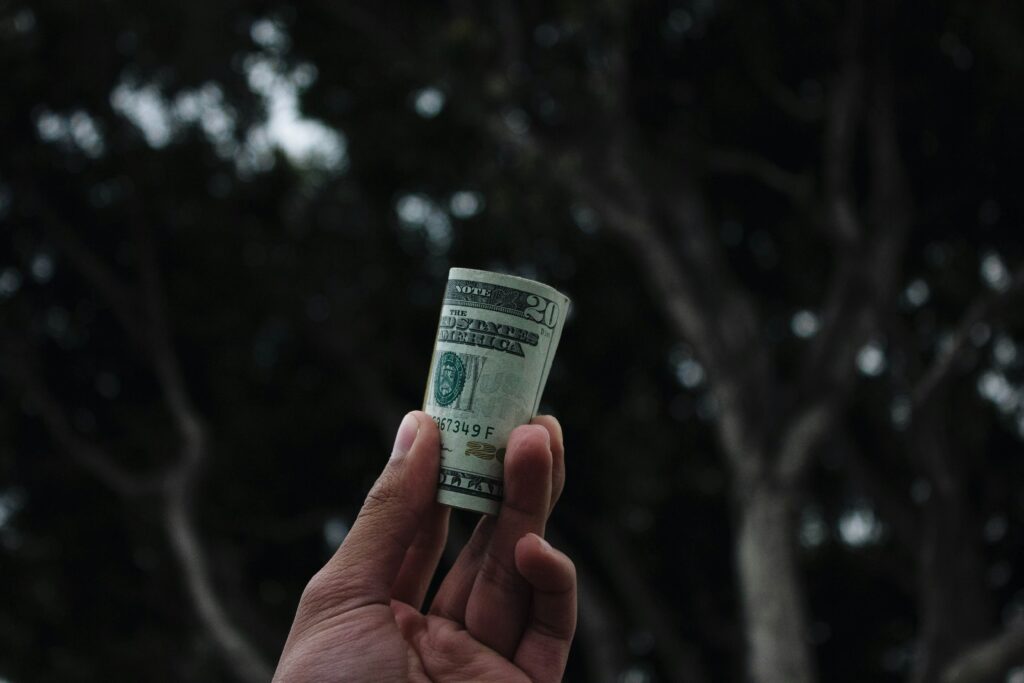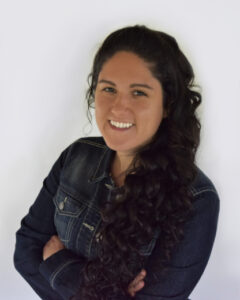Self publishing can be a money pit

Have you ever thought about paying yourself as a writer? Hear me out. Writing is a real job. So yes, you should get paid.
I know this sounds crazy, when the majority of published authors struggle to sell one book a month.
It’s difficult to believe that the ROI on fiction, non-fiction, poetry, memoir, graphic or literary novels is going to pay the rent anytime soon. And if you want to sell thousands of books and make steady evergreen income, you have to sell books that teach others how to sell thousands of books and make steady evergreen income. You’ll also need to drive traffic to that book or newsletter by marketing yourself endlessly on multiple platforms.
And let’s face it. Some of us would rather be writing.
But even writing that costs nothing but your time has hidden costs when you go to publish your final draft. You already know that if you want to stand out in the over-saturated market, you’ll need to pay $$$ for a rock-socks book cover and $$$$ for a knock-socks editor or two. This puts the total cost of professionally publishing a novel between $2-4,000 USD. And that doesn’t include website domain and hosting, ISBNs, and marketing costs.
“But I’m just doing this for fun.” I hear you say.
If you haven’t published your first book, you are already two steps ahead of the rest of us by reading this. Time is money. And if you haven’t thrown money at your unfinished novel yet, you’ve got time.
Whether you are self-publishing under your own imprint or not, I want you to think about your indie author career as a long game. And as a business. Think of your publishing as a separate financial entity, your very own publishing house. As the CEO of said Publisher, you need to make good financial decisions. Because any publishing company that doesn’t make a profit on its titles will fold.
What happens when you’re $1,000 in the red on your debut novel and struggling to sell more than 5 books a month? You spent $25 on social media ads or book promotions and sold 10 books, but only made $8 back in royalties. Your readers are hungrily awaiting the next book in your series but you can’t afford to publish it. And even if you can, you’re going deeper into the red.
You dream of offering your story in audiobook format or a special edition hardcover with gilded edges and illustrations. Maybe you’ve watched other authors succeed at raising the funds through Kickstarter, but you’ve tried and failed. Or you know crowdfunding is not a good model for you.
There’s always the hope that more published books or additional formats (such as audiobook) will lead to more book sales and higher royalties. Always the hope that in twenty years you’ll finally break even on all your writing expenses. But the truth is: every version of every story that you publish is a big investment with a high risk and long term ROI.
How can i Possibly afford to pay myself to write?
Jane Friedman hosted an article called “Paying Yourself to Write.” It prompts writers to come up with a wage they think is fair, and pay themselves that amount every month, or every finished work (article, poem, novel, etc.) The article emphasized that an amount as small as $1 was a good start, because in time it would add up and encourage me to continue writing. This is excellent advice.
But I took it a step further by combining Jane’s advice with the simplest form of investment available. High Interest Savings.
I wish I had known how easy and accessible this was when I was pushing out my debut at 19. Or during my 5 year hiatus from writing in my mid 20s.

But sadly, only 1 in 5 adults harness the power of high interest savings accounts. And of that number, writers and artists are even less likely to want to take control of their finances. High Interest Saving is an ATOMIC tool for writers because it works even when you’re taking an extended break from writing.
Only now, as an author with 5 publications under my belt do I fully understand the power I could have harnessed over the last decade if I’d thought to start investing in myself as a publisher.
Young and naïve, I thought I’d be able to make enough money off book royalties to afford my dreams. Wiser now, I understand how lucky the starving artist/writer is to make back her publishing expenses and afford her next book’s cover, editing service, and so on.
Here are 5 Simple Steps to get you on your way to paying yourself to write!
Step 1: Name Your Publisher
You are the sole-proprietor of your publishing company. Like any business owner, you should be getting paid. This step will help you properly allocate your funds and keep them separate from your personal banking. This is helpful for filing taxes, budgeting, and keeping the proper mindset.
It won’t matter if you write under several different pen names. And you won’t need to create an official imprint name, logo, and web page if you haven’t already done so. My Science Fiction Fantasy novels: “Birthright of Scars: Rising” and “Birthright of Scars: Choosing” are published under Amber Gryphon Press, so I set funds aside for Amber Gryphon Press to spend on publishing new titles.
Any name will do. You can call your publisher Best Selling Books, or The Happy Writer. The point is to give your publishing nest egg an identity. Think of it like naming a piggy bank reserved only for a specific goal.
A friend of mine puts every $5 bill she finds into a jar reserved for airfare to fly home and see her parents.
Step 2: Open a High Yeild Savings Account

This is different from a regular savings account. And it should be separate from any other high interest savings account you might already have open.
You can save with any bank of your choice. I use Marcus Savings. Marcus has no minimum deposit to open a savings account and doesn’t charge any maintenance fees. There’s also no fee if you don’t maintain a minimum balance, and they won’t penalize you for withdrawing large amounts.
If you have $1, you can start paying yourself to write today. Consider this initial investment your first author advance or the startup cost for This Successful Novelist & Co. or (your publishing house.)
When you’ve created your new savings account, give it the name you created in Step 1. This will help you identify it when you’re making online transfers.
Don’t let this step scare you. No matter where you are at financially, paying yourself as a writer is the first step to financial success as a writer and a publisher. And I’m going to show you how investing in your publishing company can pay for the publishing costs of your next title!
Step 3: Budget Your Next paycheck
Whether you’re still trying to scrape together the funds to open a savings account, or you now have one, you need to know how much you can afford to pay yourself. If you are the sole breadwinner in your household, it may be harder for you to budget an allowance for yourself. But in the long run, it is easier to give yourself an allowance of $50 a month and invest it, than to fork out $500 for a cover designer when you’ve got bills and unexpected seasonal expenses devouring your paycheck.
You might already budget and have a personal nest egg for medical emergencies or Christmas gifts. Whatever you save for, you still need to budget savings to invest in The Write House (your publishing company.)
Possible financial scenarios are endless. But no matter the size of your mortgage or other debts, you can still afford to pay yourself. I know because you’ve told yourself you deserved that double iced espresso the other day. You needed it to power through and meet your word count goal for the day.
Believe that you are a writer who deserves to get paid as much as you believe you’re a hard working person who deserves another fancy coffee. And pay yourself. Or, sacrifice something small—like that same coffee—and put those funds into your new account.
Publishing houses, small business, big businesses are not built by people with no mortgages, no bills, and full financial freedom. They’re built by people who believed in themselves and their ideas and made good investments and smart business decisions that eventually—10, 15, 20 years down the road led to the house being paid off. And they had to go further into debt to open that business. They had to take a financial risk.
So yes, it’s scary to pay yourself when you’re the sole breadwinner, raising children, living paycheck to paycheck, writing into the wee hours of the night. But if you can’t afford to pay yourself $10 this month for writing 10,000 words into your WIP, how are you ever going to afford publishing costs?
Let's Budget
Suppose you work part time. 10% of your paycheck is tithed. 20% of your paycheck goes to fuel, vehicle upkeep, and lunches. Let’s suppose that after taxes, social security, and other with-holdings, your biweekly earnings are $300. 30% = -$90. Now you are left with $210.
Let’s also suppose you’ve published 2 books. Each month, you sell anywhere between 5 and 20 copies through KU and Ingram Spark’s wide sales channels. Each month, these two distributors remit royalties from the various countries where readers are buying your books. Added together, you see a monthly royalty income of between $7 and $15 dollars.

Step 4: Decide How much you can afford to pay yourself
Now you get to choose how much of your royalties and surplus income gets invested in your publishing house’s high yield savings account.
You may have a savings goal, such as an audiobook of your recently published novel, or the next in series. Regardless, your ultimate goal is how to make your publishing egg begin paying for novels you haven’t started writing yet.
I suggest keeping a simple spreadsheet of the funds you set aside from royalties and monthly income. I make two kinds of investments into my publishing egg. I put money in to earn interest until I need to spend it on a book cover or other publishing service. And I put money in to accrue interest permanently (or until the account is self-sustaining.)
The spreadsheet helps me know how much of my savings account’s balance is a permanent investment. And the remaining is what I am free to spend on my goal (my next book or publishing cost.)
I like to make my royalties a permanent investment, and use what is left of my paycheck toward my next publishing goal. Do whatever works best for you, depending on how quickly you want to earn interest and grow your publishing egg. Occasionally, I make a paycheck a permanent investment so I can work toward earning better interest, or opening a high yield CD during the months I am drafting a novel.
Let’s go back to our numbers.
If you have a bit of financial freedom, you can invest all $210 leftover from your paycheck and all $15 of the month’s book royalties.
Depending on your situation, your numbers may look very different. It’s okay if you’re only paying yourself $20 into your publishing account every two weeks. That’s progress. $20 x 12 months = $240 + the annual interest rate of your account.
This is a promising start! And it should encourage you to pay yourself more.
Step 5: Managing your author advances
Congratulations. You have made a monumental step toward a financially stable career as an indie author. Each time you deposit a little leftover from your paycheck, birthday money, tips, or hobby-side-hustle into your publishing account, you should spend a few minutes grooming your spreadsheet to budget for your next goal.
As you decide which deposits will be temporary and permanent investments, consider how your royalties from your already published books can work to pay for the publication of your next book. It will be a long journey for most, but worth it.
Remember, you are the CEO, board, acquisitions agent, and contracted author of your independent press. You make all of the big decisions at your publishing house.

The better your publisher’s interest earnings are, the more of your books they will be able to publish. They’ll be able to hire better cover designers, better editors. They’ll have a larger marketing budget. And they might even be able to afford to send you to a writer’s retreat or convention! The possibilities for your career are endless. And you are in control.
Loan Yourself Some Money
Don’t be afraid to loan yourself some money. If you have money sitting in a personal savings account, you can temporarily place it in your Publishing High Interest Savings Account to accrue interest. Keep a spreadsheet showing how much you’ve loaned yourself, in case you ever need to move those funds back into your personal account.
A spreadsheet is also useful for keeping track of the different projects you’re saving for. I keep a running total of the royalties I place in my HISA and tag them as permanent investments. The sole function of that royalty money is to earn interest.
I also keep a running total of what I pay myself using the leftover money of my paycheck. This money is a goal investment. It earns interest until I choose to spend it.
High Interest Savings is a low risk investment. Suppose I loaned myself $2,000 for three years to help my new Author HISA earn a better interest. Suppose that a year later, I have unexpected medical expenses. I can transfer that $2,000 loan back into my personal checking account to pay for my medical expenses.
If you don’t have any extra funds and you’re scratching together $5 to open your HISA, don’t worry. And whatever you do, DON’T COMPARE your journey to anyone else’s. You’re the 1 out of 5 who has a HISA. You’re already winning. Saving money is a lot of work, but also rewarding. Embrace the joyful experience of watching your savings grow.
Tips:
Find excuses to pay yourself. Pay yourself on your birthday. Invest a portion of your yearly tax return.
Tell your friends and family that you’re investing in your career and would appreciate cash or check gifts instead of gift cards or other items on your birthday or at Christmas.
Things to Remember: I can’t speak for those of you living in other parts of the world, but Uncle Sam taxes interest earned on savings. In the USA, if a bank, financial institution, or other entity pays you at least $10 of interest during the year, it is required to prepare a Form 1099-INT.
Make sure your chosen bank doesn’t have any hidden fees or minimums. I like recommending Marcus Goldman Sachs because they have no fees or penalties and you can open a high interest savings account with as little as $1.
Want more savings tips and instant access to new creative business organization tools designed for authors? Subscribe below to take charge of your publishing finances and start paying yourself today.

Laurisa Brandt is an award winning science fantasy author who has published five books. When not writing, she enjoys helping fellow creatives see their true potential and achieve their dreams. You can learn more about Laurisa and her “Birthright of Scars” duology Here.
DISCLAIMER: The information contained in this website and through the Free Indie Author Investor Tool Kit is for general information purposes only. Any reliance you place on such information is strictly at your own risk. It is not intended to constitute legal or financial advice and does not take your individual circumstances and financial situation into account.
This post contains affiliate links, meaning, I may receive a temporary interest rate increase if you open an account with Marcus Goldman Sachs.
Source the original Jane Friedman article: